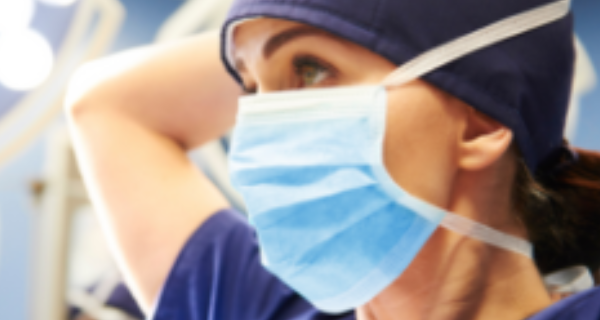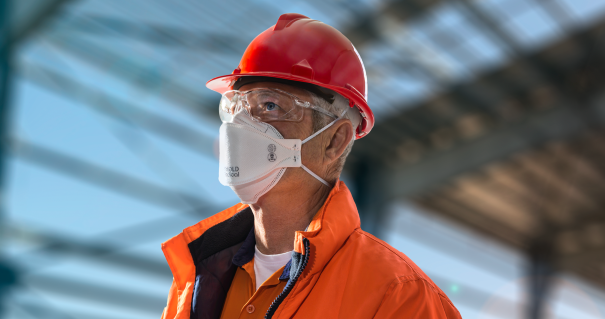Which way do you wear a face mask?

If you’re unsure how to wear surgical mask, it can be tricky to know which side should be facing outwards and which length is the top or bottom.
Surgical face masks are designed to be worn in a specific way to act as a physical barrier. If you don't fit and wear your mask correctly, you leave yourself exposed.
What is the purpose of a surgical face mask?
Surgical face masks protect the wearer against blood or fluid splashes. While a cloth mask can provide some level of protection in less critical settings, surgical masks are more effective as a control measure to prevent droplets of bodily fluids from both your nose and mouth from escaping, which is particularly important in limiting the spread of respiratory viruses.
How do surgical face masks work?
Surgical face masks are often made from three layers, an outer hydrophobic fluid-repellent layer, high-efficiency filtering middle layers and a hydrophilic absorbent layer on the inside. Detmold Medical's surgical face masks take things a step further with an additional layer of filtering material for added protection.
Surgical face masks work in two ways. Firstly, the fluid-repelling layer helps to protect the wearer against blood splashes and sprays. Secondly, the absorbent layer captures the wearer's bodily fluids, such as coughs and sneezes.


1. Coloured side out
Most surgical masks have a coloured side, which is the fluid repellent layer. As this side is designed to protect from the passage of blood splash or body fluids outside the mask, it should always face outwards
Some masks, however, are the same colour on both sides, which can make things a little trickier. In this case, you can move on to the second step.
2. Soft side skin down
Another way to figure out which way your mask should be facing is to look at the two sides of the mask, you'll notice that one is a lot softer than the other. The softer layer is designed to absorb moisture, like the droplets that are released from your nose and mouth, so it should face towards your skin.
The rougher, textured side is the moisture-repellent layer and should face outwards.
3. Metal strip up
Many surgical masks also feature a small metal strip or nose piece along one of the long edges. This is intended to be moulded across your nose for a more secure fit. Make sure the side with the metal nose piece is facing upwards.
How to tell which way your surgical mask goes
Not sure which way your surgical mask is meant to face? Just follow these three simple steps to make sure you're wearing your mask the right way.
How to wear Surgical face masks
Now that you've figured out which way your face mask should be facing, you'll want to make sure it's fitted and worn correctly for the best efficacy. Here's how to correctly fit and wear face masks.
1. Wash your hands
Before you fit your surgical face mask, it’s important to use proper hygiene by washing your hands with soap and water or hand sanitiser before and after fitting your mask.
2. Hold the mask by the short edges
To avoid touching the front of the mask, hold the mask by the ear loops or short edges on the side with the moisture-repellent side facing away from you and the metal strip positioned across your nose.
3. Put the mask on
Firmly pinch the nosepiece as you secure the ear loops around your ears one at a time. Make sure the mask sits evenly across your face.
4. Expand the pleats
Holding the very top and bottom of the mask, expand the pleats so the mask comfortably covers your face.
5. Check mask fit
Check that the mask is secured across the bridge of your nose. There should be minimal gaps between the mask and your face, ensuring it fits snugly for proper protection.

Don’t forget, based on the Australian Government's advice you should replace your disposable mask every four hours or when it becomes damp or damaged, whichever comes first.People in healthcare or community environments where there is a higher risk of exposure should be especially vigilant. Once it's time to dispose of your mask, remove it by holding the ear loops and taking it off away from your face before discarding it safely. Always make sure that before you put on a face mask, you wash your hands with soap and water or a hand sanitiser. The same goes for after you remove your mask.
Detmold Medical carries a range of disposable face masks that are made for comfort and protection. Choose from D95 P2 Respirators, surgical face masks, medical procedure masks and community level masks.








